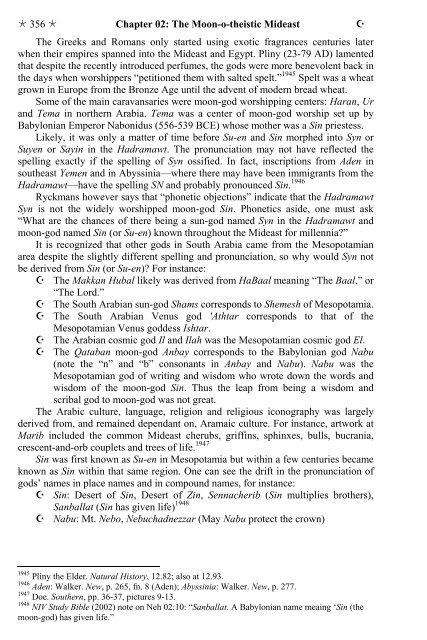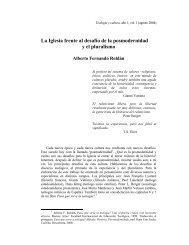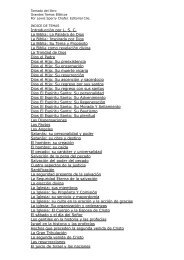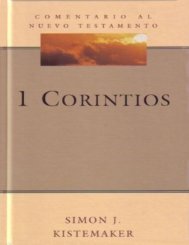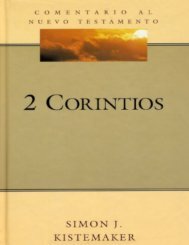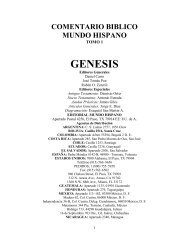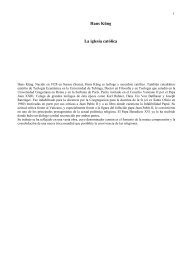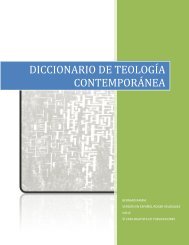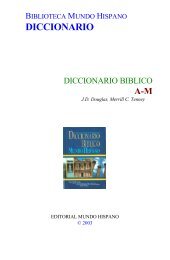Moon-o-theism: Religion of a War- and Moon-god Prophet
Moon-o-theism: Religion of a War- and Moon-god Prophet
Moon-o-theism: Religion of a War- and Moon-god Prophet
- No tags were found...
Create successful ePaper yourself
Turn your PDF publications into a flip-book with our unique Google optimized e-Paper software.
356 Chapter 02: The <strong>Moon</strong>-o-theistic Mideast The Greeks <strong>and</strong> Romans only started using exotic fragrances centuries laterwhen their empires spanned into the Mideast <strong>and</strong> Egypt. Pliny (23-79 AD) lamentedthat despite the recently introduced perfumes, the <strong>god</strong>s were more benevolent back inthe days when worshippers “petitioned them with salted spelt.” 1945 Spelt was a wheatgrown in Europe from the Bronze Age until the advent <strong>of</strong> modern bread wheat.Some <strong>of</strong> the main caravansaries were moon-<strong>god</strong> worshipping centers: Haran, Ur<strong>and</strong> Tema in northern Arabia. Tema was a center <strong>of</strong> moon-<strong>god</strong> worship set up byBabylonian Emperor Nabonidus (556-539 BCE) whose mother was a Sin priestess.Likely, it was only a matter <strong>of</strong> time before Su-en <strong>and</strong> Sin morphed into Syn orSuyen or Sayin in the Hadramawt. The pronunciation may not have reflected thespelling exactly if the spelling <strong>of</strong> Syn ossified. In fact, inscriptions from Aden insoutheast Yemen <strong>and</strong> in Abyssinia—where there may have been immigrants from theHadramawt—have the spelling SN <strong>and</strong> probably pronounced Sin. 1946Ryckmans however says that “phonetic objections” indicate that the HadramawtSyn is not the widely worshipped moon-<strong>god</strong> Sin. Phonetics aside, one must ask“What are the chances <strong>of</strong> there being a sun-<strong>god</strong> named Syn in the Hadramawt <strong>and</strong>moon-<strong>god</strong> named Sin (or Su-en) known throughout the Mideast for millennia?”It is recognized that other <strong>god</strong>s in South Arabia came from the Mesopotamianarea despite the slightly different spelling <strong>and</strong> pronunciation, so why would Syn notbe derived from Sin (or Su-en)? For instance: The Makkan Hubal likely was derived from HaBaal meaning “The Baal,” or“The Lord.” The South Arabian sun-<strong>god</strong> Shams corresponds to Shemesh <strong>of</strong> Mesopotamia. The South Arabian Venus <strong>god</strong> 'Athtar corresponds to that <strong>of</strong> theMesopotamian Venus <strong>god</strong>dess Ishtar. The Arabian cosmic <strong>god</strong> Il <strong>and</strong> Ilah was the Mesopotamian cosmic <strong>god</strong> El. The Qataban moon-<strong>god</strong> Anbay corresponds to the Babylonian <strong>god</strong> Nabu(note the “n” <strong>and</strong> “b” consonants in Anbay <strong>and</strong> Nabu). Nabu was theMesopotamian <strong>god</strong> <strong>of</strong> writing <strong>and</strong> wisdom who wrote down the words <strong>and</strong>wisdom <strong>of</strong> the moon-<strong>god</strong> Sin. Thus the leap from being a wisdom <strong>and</strong>scribal <strong>god</strong> to moon-<strong>god</strong> was not great.The Arabic culture, language, religion <strong>and</strong> religious iconography was largelyderived from, <strong>and</strong> remained dependant on, Aramaic culture. For instance, artwork atMarib included the common Mideast cherubs, griffins, sphinxes, bulls, bucrania,crescent-<strong>and</strong>-orb couplets <strong>and</strong> trees <strong>of</strong> life. 1947Sin was first known as Su-en in Mesopotamia but within a few centuries becameknown as Sin within that same region. One can see the drift in the pronunciation <strong>of</strong><strong>god</strong>s’ names in place names <strong>and</strong> in compound names, for instance: Sin: Desert <strong>of</strong> Sin, Desert <strong>of</strong> Zin, Sennacherib (Sin multiplies brothers),Sanballat (Sin has given life) 1948 Nabu: Mt. Nebo, Nebuchadnezzar (May Nabu protect the crown)1945 Pliny the Elder. Natural History, 12.82; also at 12.93.1946 Aden: Walker. New, p. 265, fn. 8 (Aden); Abyssinia: Walker. New, p. 277.1947 Doe. Southern, pp. 36-37, pictures 9-13.1948 NIV Study Bible (2002) note on Neh 02:10: “Sanballat. A Babylonian name meaing ‘Sin (themoon-<strong>god</strong>) has given life.”


